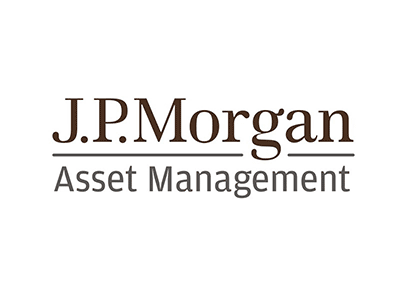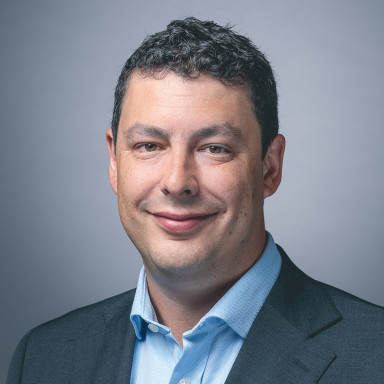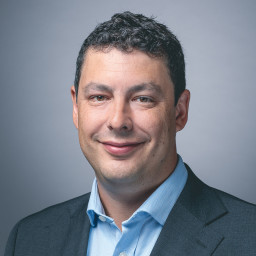Bob Michele and Iain Stealey are experienced fixed income (bond) investors
This fund represents the best of JPMorgan’s global fixed income capabilities
We think this is a great option for investors who want broad and highly diversified exposure to global bond markets in a single fund
This fund was recently added to our Wealth Shortlist of funds chosen by our analysts for their long-term performance potential
How it fits in a portfolio
The JPMorgan Global Bond Opportunities fund aims to achieve a balance between income and capital growth over the long term (at least five years). To do this, it invests in lots of different bonds issued by companies and governments all over the world. This gives investors highly diversified bond investments within a single fund.
The fund could act as a core holding for a bond focused investment portfolio, diversify a portfolio focused on growth, a portfolio seeking income, or one focused on company shares.
Manager
Bob Michele, Global Chief Investment Officer (CIO) and Head of Global Fixed Income, Currency & Commodities (GFICC), has over 40 years’ industry experience and joined JPMorgan in 2008. Prior to JPMorgan, he worked at a number of companies including Schroders and BlackRock. He’s based in New York, has managed this fund since launch in 2015 and another version of the fund for US investors since launch in 2012.
Michele’s one of six managers of the fund. Iain Stealey, International CIO within the GFICC, is based in London and works closely with Michele on choosing how much of the fund to invest in different parts of the global bond market. He has over 20 years’ industry experience, having joined JPMorgan in 2002.
Michele and Stealey are supported by four other managers who have a greater focus on individual bond selection. Jeffrey Hutz is based in Indianapolis and is responsible for bond selection within high yield. He has over 20 years’ experience having joined JPMorgan in 2004. Andrew Headley is based in New York and has responsibility for bond selection within the securitised part of the fund. He has over 20 years’ experience and joined JPMorgan in 2005.
Lisa Coleman has historically managed the bond selection for the investment grade part of the fund. She has over 40 years’ experience and has been Head of Global Credit at JPMorgan for the last 17 years. She recently announced plans to retire in early 2026 though, so is in the process of handing over responsibility for this part of the fund to Andreas Michalitsianos.
Michalitsianos became a manager of this fund in April 2025 and will take over as Head of Global Credit on 1 October 2025. He’s based in London and has over 20 years’ experience in the industry. He’s worked closely with Coleman for the last 16 years and we think he’s well placed to take over her responsibilities.
Each of the six fund managers are supported by a larger team. There are also other teams within JPMorgan that help with other areas of bond selection, such as the Emerging Market Debt team and the Global Rates team.
This means there’s lots of people feeding into the fund’s management. This reflects JPMorgan’s aim to represent the best ideas of their global bond investment teams.
This means that key person risk is low on many individuals involved in running the fund, but our view is that Michele and Stealey are particularly important. They focus on managing the risks being taken in the fund and choosing what areas of the bond market to invest in, as opposed to individual bond selection. This role of bringing together all the knowledge and information from the wider bond teams into a single fund is considered to be important to the success, or not, of this fund.
Process
The managers start by considering their view of the world and what areas of the bond market have the potential to perform well and which areas they want to avoid. They do this at a quarterly meeting, where lots of key people from various teams across the world discuss and debate where they think the best areas to invest are. This meeting results in a high-level view of the world and gives Michele and Stealey a starting point for deciding how much to invest in the different areas of the global bond market.
Next they decide how much each of the other fund managers should have to invest in their different areas of the bond market. Coleman and Michalitsianos, Hutz and Headley then invest in individual bonds in their specialist areas.
There are other teams within JPMorgan that help in some additional specialised areas, such as emerging market bonds and government bonds. While there aren’t named managers from these teams on this fund, the process is the same.
The result is an extremely diversified bond fund that typically has more than 1,000 individual bonds, invested across 15 different parts of global fixed income markets, from over 50 different countries. Investing in that many bonds reduces the potential impact that each individual investment can have on overall returns for the fund, both positively or negatively. But it still allows investors to benefit from each individual team’s best ideas and from their overall bond selection ability.
There are few limits on how much can be invested in different areas of the bond market. One limit though relates to ‘duration’. Duration is measured in years and reflects how sensitive the fund is to changes in interest rates and bond yields. The higher the level of duration, the more sensitive it is. The fund can go as low as -2 years or as high as 8 years. At the end of May 2025, the fund had a duration of 4.72 years.
The managers can also invest in currencies to generate returns. This tends to be a small part of the fund because currencies have the potential to be volatile and the managers don’t want these investments to dominate returns.
Over time the amount invested in different areas of the global bond market will vary, depending on the team’s views of which areas are offering the best value.
At the end of May 2025, the fund mainly invested in investment grade corporate bonds, emerging market debt and high yield corporate bonds, with 34.1%, 21.5% and 19.5% invested in each area respectively. In terms of regions, the largest was 45.5% invested in bonds issued from the United States. The second largest position was 5.0% in UK bonds.
Investments in high yield bonds, emerging markets, currencies and the use of derivatives all add risk.
Culture
JPMorgan is one of the world's biggest asset managers. It has investment professionals based all over the world, and the team behind this fund can tap into this experience and local knowledge.
Michele and Stealey, and the other fund managers, have worked at JPMorgan for decades. This means they understand how to get the most out of the resources available to them across the world. It also gives us comfort that the culture across the various teams is typically positive and the long-term incentivisation of managers is also considered a positive.
ESG Integration
JPMorgan committed to integrate Environmental, Social and Governance (ESG) factors into their investment processes for active funds in 2016 and ESG is now a foundation for investment decisions across the firm. JPMorgan funds take a variety of approaches, from quantitively scoring companies on a variety of ESG measures to help with portfolio construction, to more qualitative analysis achieved through fundamental research and company meetings. All fund managers have access to the central Sustainable Investing team, as well as thematic research and analytics, which focus on climate change and carbon transition.
Investment teams are required to demonstrate their progress on integrating ESG to a working group of senior managers from across the business and the Sustainable Investing team. Their progress is measured against a 10-point scoring system and must satisfy several conditions before it can achieve ‘ESG accredited’ status.
If the strategy doesn’t meet this threshold, the investment team in question will need to incorporate the feedback from the working group and reapply to restart the review process. Once approved, teams must seek recertification every three years, and are subject to ongoing monitoring. We like this objective approach to internal ESG accreditation.
The firm has detailed voting policies which are specific to each region they invest in and account for local customs. Investment teams and investment stewardship specialists in the relevant region are responsible for implementing those policies, based on their deep knowledge and experience of the country, sector and company. A detailed fund-by-fund and company-by-company voting record is available on the JPMorgan website, although voting rationale isn’t provided. Fund managers also regularly engage with the companies they invest in, and there are a number of case studies on their website and in their annual Investment Stewardship report.
In February 2024, J.P. Morgan Asset Management controversially withdrew from the Climate Action 100+ collaborative engagement initiative, citing that it had built up its own stewardship capabilities. Following a meeting with the firm’s Global Head of Sustainable Investing, we were left feeling confident that it remains firmly committed to sustainability.
While ESG is integrated across the firm, with suitable attention given to any potential investment risk for every bond held within this fund, this fund isn’t a responsible or sustainably invested fund.
Cost
This fund’s available at an annual ongoing fund charge of 0.65%. The HL platform fee of up to 0.45% per year also applies, except in a Junior ISA, where no platform fee applies.
The charge of 0.65% is broadly in the middle of the range for actively managed funds in the IA £ Strategic Bond sector that are available on the HL platform.
Performance
Since launch on 31 January 2015 to the end of June 2025, the fund’s performed better than the IA £ Strategic Bond sector, returning 35.60%* compared to 31.85%. Past performance is not a guide to future returns.
Because there’s such a high number of bonds in the fund, we expect performance to be driven by the higher-level allocations to different areas of the bond market over time.
The fund has broad exposure to different global bond markets so we expect the fund to typically provide a return that reflects global bond markets overall. It’s unlikely the fund will have short-term periods of performing much better, or worse, than its peers. The aim is to provide returns consistent with the wider bond market and to add value over the long term. This is one of the reasons we like the fund – it provides investors with broad exposure to bond markets without big surprises in performance.
Over the 12 months to the end of June, the fund outperformed the IA £ Strategic Bond sector, returning 8.05% compared to 6.98%. All areas of the fund provided positive returns over the period, with investment grade corporate bonds and higher risk, high yield corporate bonds in particular boosting performance.
At the end of May 2025, the fund had a yield to maturity of 6.15%. Please note that yields aren’t guaranteed and could fall as well as rise over time. The yield can be taken by investors seeking income, or reinvested to boost future growth potential.
Annual percentage growth
June 2020 - June 2021 | June 2021 - June 2022 | June 2022 - June 2023 | June 2023 - June 2024 | June 2024 - June 2025 | |
|---|---|---|---|---|---|
JPM Global Bond Opportunities | 6.35% | -9.07% | 4.37% | 5.20% | 8.05% |
IA £ Strategic Bond | 6.62% | -10.70% | -0.25% | 9.00% | 6.98% |


